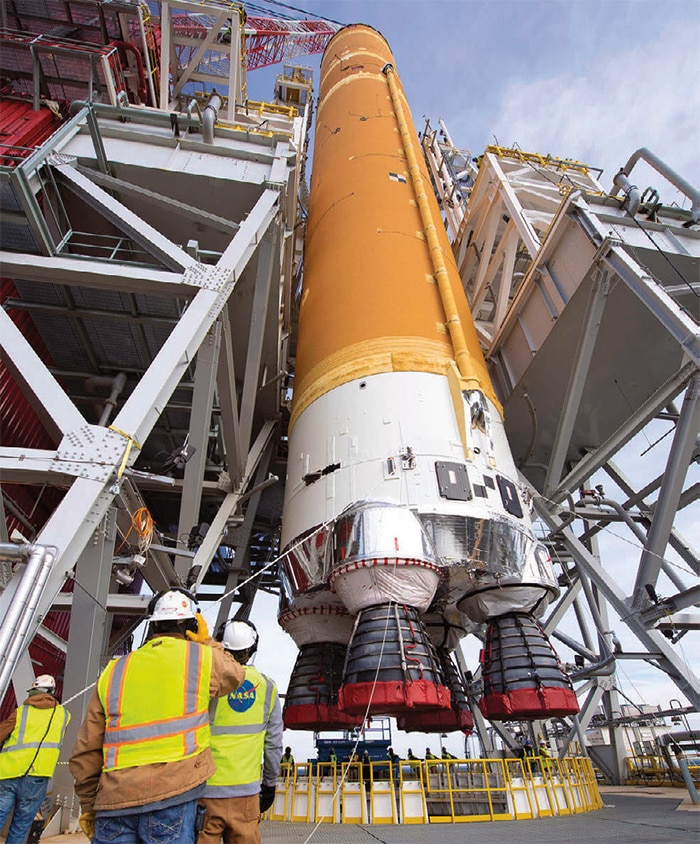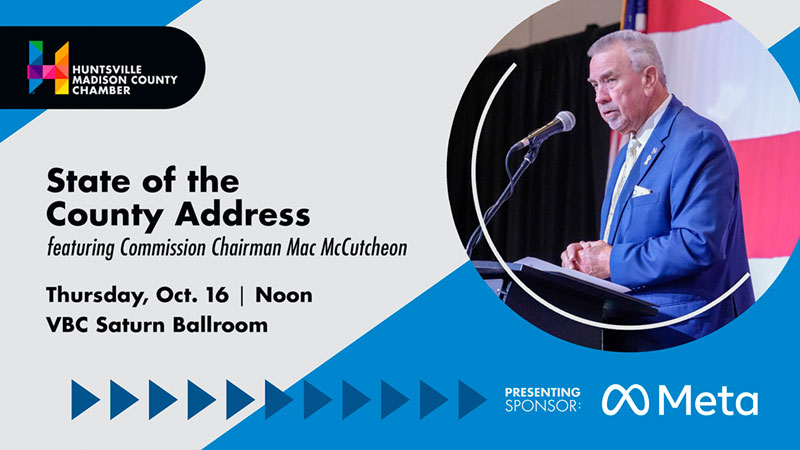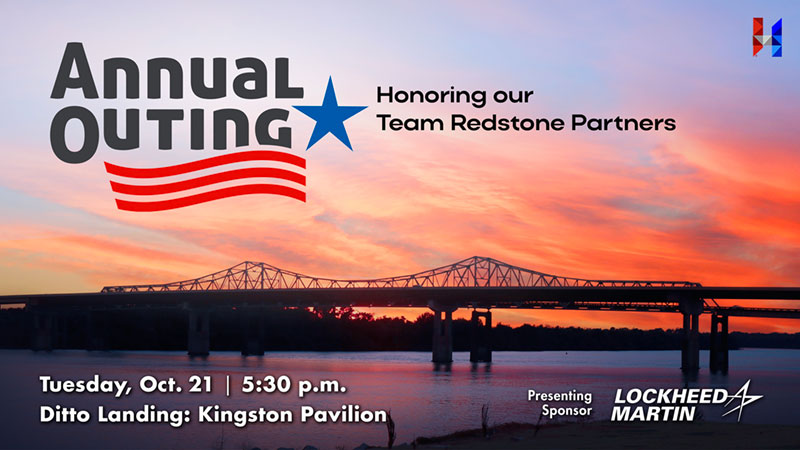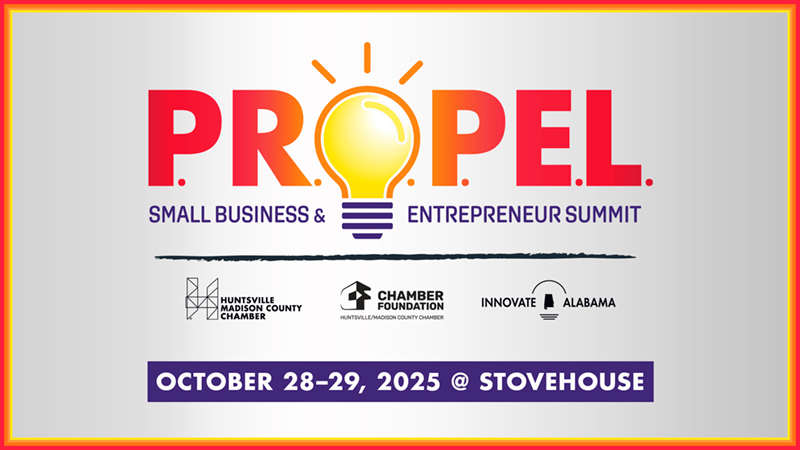[divider height=”20″]
NASA, others continue quest for future flight
By Mike Ward, CCE , Senior Vice President Government & Public Affairs
In spite of challenges created by the COVID pandemic, NASA and local space companies continue to log some impressive accomplishments.
The Space Launch System core stage, the largest part of NASA’s heavy-lift launch vehicle, is currently in the test stand at the Stennis Space Center. There, it will be subjected to a series of initial “Green Run” tests, and functional checks designed to identify any operational issues. Those tests will culminate in a test fire replicating the stage’s first flight.
There are eight tests in the Green Run series, and the first two are completed:
 TEST 1: The Modal Test used shakers to impart dynamic forces on the suspended stage to identify primary bending modes of the stage. Information from the modal test will help engineers verify vehicle models needed for the operation of the rocket’s guidance, navigation and control systems. [completed]
TEST 1: The Modal Test used shakers to impart dynamic forces on the suspended stage to identify primary bending modes of the stage. Information from the modal test will help engineers verify vehicle models needed for the operation of the rocket’s guidance, navigation and control systems. [completed]
TEST 2: The Avionics Testing validates flight computers and electronics that control the rocket but also those that collect flight data and monitor the overall health of the core stage. [completed]
TEST 3: Fail-Safes Test – Engineers will check out all the safety systems that shut down operations during testing. To do this, they will simulate potential issues.
TEST 4: Propulsion – This will be the first test of each of the main propulsion system components that connect to the engines. Command and control operations will be verified, and the core stage will be checked for leaks in fluid or gas.
TEST 5: Thrust Vector Controls – Engineers will ensure that the thrust vector control system can move the four engines and check all the related hydraulic systems.
TEST 6: Countdown – This test simulates the launch countdown, including step-by-step fueling procedures. Core stage avionics are powered on, and propellant loading and pressurization are simulated. The test team will exercise and validate the countdown timeline and sequence of events.
TEST 7: “Wet” Dress Rehearsal – Engineers will demonstrate loading, controlling and draining more than 700,000 gallons of cryogenic propellants into the two test stand run tanks and then returning the stage to a safe condition.
TEST 8: Hot Fire – The core stage’s four RS-25 engines will operate for up to 8 minutes, generating 1.6 million pounds of thrust, the amount of thrust the engines produce at sea level on the launch pad at liftoff. The Hot Fire test is expected to take place this Fall. Following the final Hot Fire test, the Core Stage will be shipped to the Kennedy Space Center for an uncrewed launch to the Moon next year.
Commercial Crew Developments
Meanwhile, work on Boeing’s Starliner Commercial Crew Vehicle continues, with a final test of the Capsule set for this Fall, prior to a crewed mission next year. The Boeing Capsule will be launched on a United Launch Alliance (ULA) Atlas rocket, manufactured at the ULA plant in Decatur, Ala. SpaceX conducted a successful crewed launch to the Space Station on May 30.
New Systems in Development
Blue Origin is making progress on its BE-4 engine production facility in Cummings Research Park and on the test facility at NASA’s Marshall Space Flight Center. Blue delivered its first engine to ULA for their Vulcan rocket in early July, with a second engine expected soon thereafter. ULA is well into the fabrication of its first Vulcan rocket and hopes to test the vehicle in 2021.
This article appears in the August 2020 issue of Initiatives magazine, a publication of the Huntsville/Madison County Chamber.




